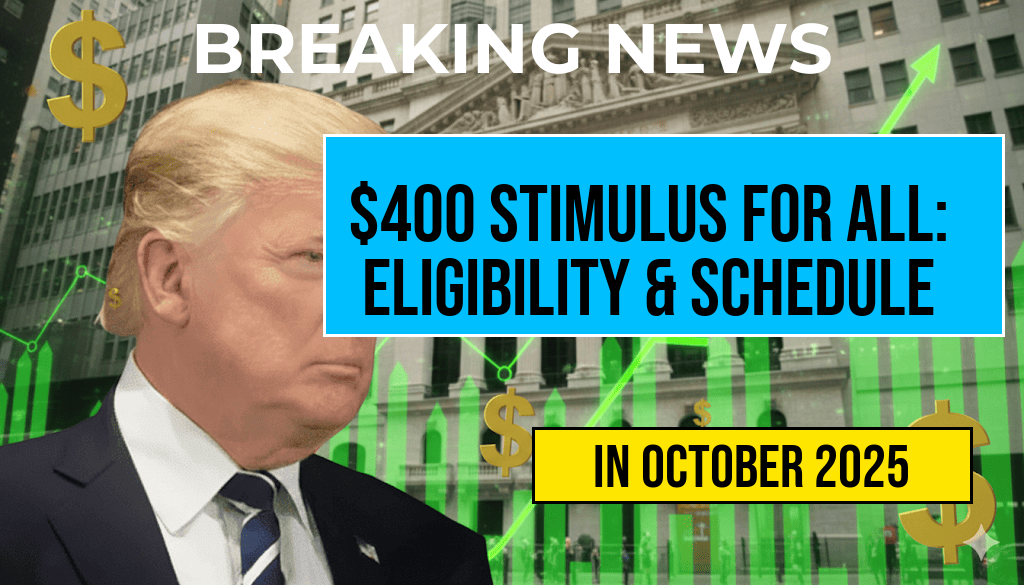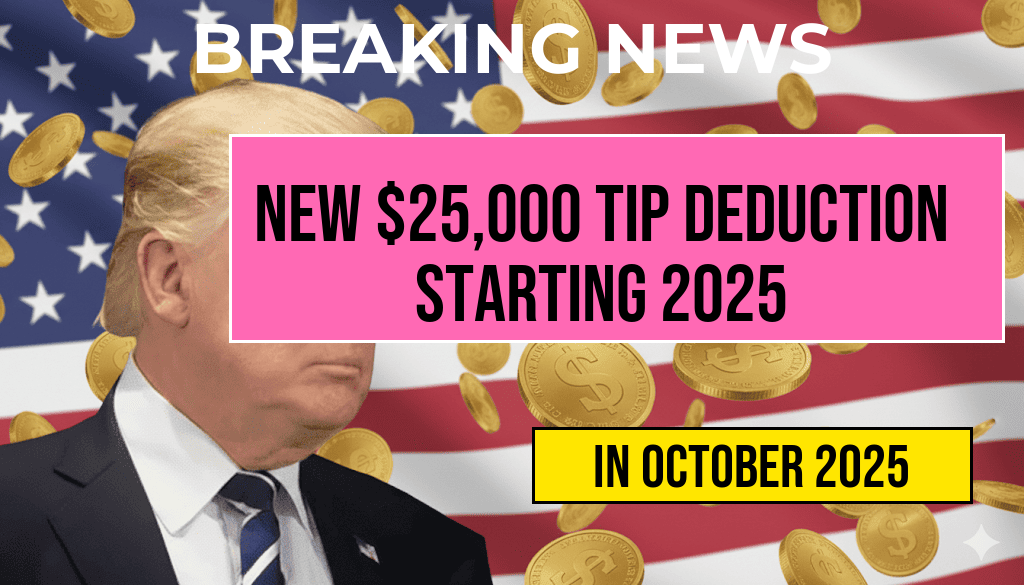The recent announcement of a $400 stimulus payment for all eligible Americans has generated significant buzz across communities nationwide. Unlike previous targeted relief efforts, this initiative aims to provide a uniform financial boost to individuals regardless of income level, employment status, or household size. The program’s eligibility criteria are designed to be straightforward, ensuring broad access. Payments are scheduled to be distributed over several weeks, with specific deadlines and procedures outlined by federal and state agencies. This article delves into the eligibility requirements and provides a comprehensive payment schedule so recipients can prepare for their upcoming disbursements. For those seeking financial support or interested in government assistance programs, understanding these details can help maximize benefits and avoid common pitfalls.
What is the $400 Stimulus Payment Program?
The $400 stimulus payment is part of a broader effort by federal authorities to bolster economic recovery and provide relief amid ongoing economic challenges. Unlike prior stimulus checks which targeted specific income brackets or households, this initiative offers a uniform payment to all qualifying individuals. The program was announced by the Department of Treasury and is supported by recent legislation aimed at stimulating consumer spending and reducing financial strain for Americans across the board.
Eligible recipients will receive a one-time $400 payment, which can be used to cover essentials such as groceries, rent, or utilities. The program’s design emphasizes simplicity and speed, with minimal documentation required for qualifying applicants.
For additional context on stimulus payments and their legislative background, readers can visit the [Wikipedia page on Economic Stimulus](https://en.wikipedia.org/wiki/Economic_stimulus) for a comprehensive overview.
Eligibility Requirements
Basic Criteria
- Residency: Applicants must be legal residents of the United States, including U.S. citizens, permanent residents, and certain qualifying non-citizens.
- Income Limitations: The program is designed to be inclusive; however, income thresholds may influence actual payment amounts or eligibility in some states. Generally, no minimum income requirement exists for eligibility.
- Age: Individuals aged 18 and older qualify, with exceptions for minors in some cases depending on state-specific rules.
Additional Eligibility Factors
- Tax Filing Status: Recipients must have filed a valid tax return for the most recent year or meet specific income reporting requirements.
- Residency Duration: Applicants should reside in the U.S. for at least six months prior to the application date.
- Previous Benefits: The program does not disqualify individuals currently receiving other federal benefits such as Social Security or unemployment aid.
It’s advisable for applicants to verify their eligibility through official government portals or consult local agencies for state-specific criteria, especially as some states may implement additional qualification standards.
For detailed eligibility information and updates, visit the official [IRS website](https://www.irs.gov/) or your state’s treasury department page.
Payment Schedule and Distribution Process
Disbursement Timeline
| Payment Phase | Expected Date Range | Notes |
|---|---|---|
| Initial Payments | Week of March 15 – March 22 | Recipients who filed tax returns early will receive payments first. |
| Secondary Distributions | March 23 – April 5 | Additional eligible individuals processed via state agencies. |
| Final Round | April 6 – April 20 | Remaining payments distributed through direct deposit and mailed checks. |
How Payments Are Made
Funds are primarily distributed via direct deposit to bank accounts linked to tax filings or official applications. For those without direct deposit, payments will be mailed as paper checks or prepaid debit cards. Recipients are advised to ensure their contact and banking information is up to date with the relevant agencies to avoid delays.
Individuals can track their payment status through the official IRS portal or the designated state treasury websites. Any discrepancies or issues should be reported immediately to prevent missed or delayed payments.
For further guidance on the distribution process, the [IRS FAQ section](https://www.irs.gov/newsroom/economic-impact-payments-where-is-my-payment) offers helpful insights and troubleshooting options.
Frequently Asked Questions
Who is eligible to receive the $400 stimulus payment?
Eligible recipients include individuals and families who meet specific income and filing requirements outlined in the stimulus payment program. Typically, eligible recipients are those with an income below certain thresholds and who have filed their tax returns for the relevant year.
What are the main eligibility requirements for the $400 stimulus payment?
The primary eligibility requirements include having a valid Social Security number, filing a tax return for the relevant year, and earning an income below the specified limit. Additional criteria may apply depending on individual circumstances, such as filing status and dependents.
When will the stimulus payments be distributed?
The complete payment schedule outlines specific dates when the $400 stimulus payments will be disbursed, which may vary based on filing date and payment method. Generally, recipients can expect to receive their payments within a few weeks of the official distribution start date.
How will I receive my stimulus payment?
Payments are typically issued via direct deposit to your bank account or as a paper check sent through the mail, depending on your preferred payment method and the information provided during tax filing.
Can I check the status of my stimulus payment?
Yes, you can check the status of your stimulus payment by visiting the official government payment portal or IRS tracker tool, where you will need to provide your Social Security number, filing status, and payment details.
The federal government has announced a $400 stimulus payment for all eligible Americans, aiming to provide financial relief amid ongoing economic challenges. The program, which is designed to be inclusive, offers a straightforward application process and a clear payment schedule. While eligibility requirements are broad, certain income thresholds, filing statuses, and other criteria determine who qualifies for the full amount. Payments are scheduled to be disbursed over the coming months, with specific timelines depending on the recipient’s state and filing method. This initiative marks a significant effort by policymakers to bolster household budgets during uncertain times, with many wondering about the precise details of eligibility and the timing of their payments. Below, we detail the key eligibility requirements and provide a comprehensive schedule to help Americans prepare for the upcoming disbursements.
Eligibility Requirements for the $400 Stimulus Payment
General Criteria
- Residency: Applicants must be U.S. residents or citizens, with documentation confirming their residence status.
- Income Limits: The program is designed to assist individuals and families earning below specific income thresholds. Generally, those earning up to $75,000 annually for singles, $112,500 for head-of-household filers, and $150,000 for married couples filing jointly qualify for the full payment.
- Filing Status: Taxpayers must have filed a federal income tax return for the most recent year, or be eligible through other qualifying criteria outlined by the IRS.
- Age and Citizenship: Applicants must be at least 18 years old and either U.S. citizens or lawful residents.
Additional Criteria
- Social Security Recipients: Those receiving Social Security retirement, survivor, or disability benefits are generally eligible without requiring a separate tax return, provided they meet income thresholds.
- Dependents: The stimulus payment is intended for individuals, not dependents, so payments are only issued directly to eligible adults.
- Previous Payment Status: Individuals who received prior stimulus payments or relief funds are still eligible for the $400 payment if they meet current criteria.
Complete Payment Schedule
Disbursement Timeline
| Filing Method | Payment Date Range | Notes |
|---|---|---|
| Electronic Filing (Direct Deposit) | Starting March 15 – March 31 | Most recipients will see payments first through direct deposit, with funds appearing within a few days of the start date. |
| Paper Checks and Debit Cards | April 1 – April 15 | Recipients without direct deposit information will receive paper checks or prepaid debit cards by mail. |
Important Deadlines
- Filing extension deadline: To qualify for the upcoming payment, taxpayers should ensure their latest tax returns or relevant documentation are submitted by April 15.
- Update banking information: Those expecting direct deposits but who haven’t updated their banking details should do so promptly through the IRS portal to avoid delays.
How to Track Your Payment
Recipients can monitor their payment status through the official IRS “Get My Payment” portal, which provides real-time updates on disbursement progress. To access the portal, individuals need their Social Security number, date of birth, and mailing address ZIP code. The IRS also offers guidance for those who haven’t received their payments by the scheduled date, including options to request payment re-issuance or report issues.
Additional Considerations
While the $400 stimulus payment aims to be accessible, some Americans may face delays or disqualifications based on income, filing status, or recent changes in their personal circumstances. Individuals unsure about their eligibility are encouraged to consult resources such as the IRS website (irs.gov) or seek assistance from qualified tax professionals. As the program evolves, updates may be issued, emphasizing the importance of staying informed through official channels.
For further details on federal relief initiatives and related economic support measures, visit authoritative sources like the Wikipedia page on stimulus packages or reputable financial news outlets such as Forbes.
Frequently Asked Questions
Question
What are the eligibility requirements to receive the $400 stimulus payment?
Question
How can I check the status of my stimulus payment?
Question
What is the payment schedule for the $400 stimulus?
Question
Are taxes and income limits factors in qualifying for the $400 stimulus?
Question
What should I do if I missed the payment or received less than expected?








